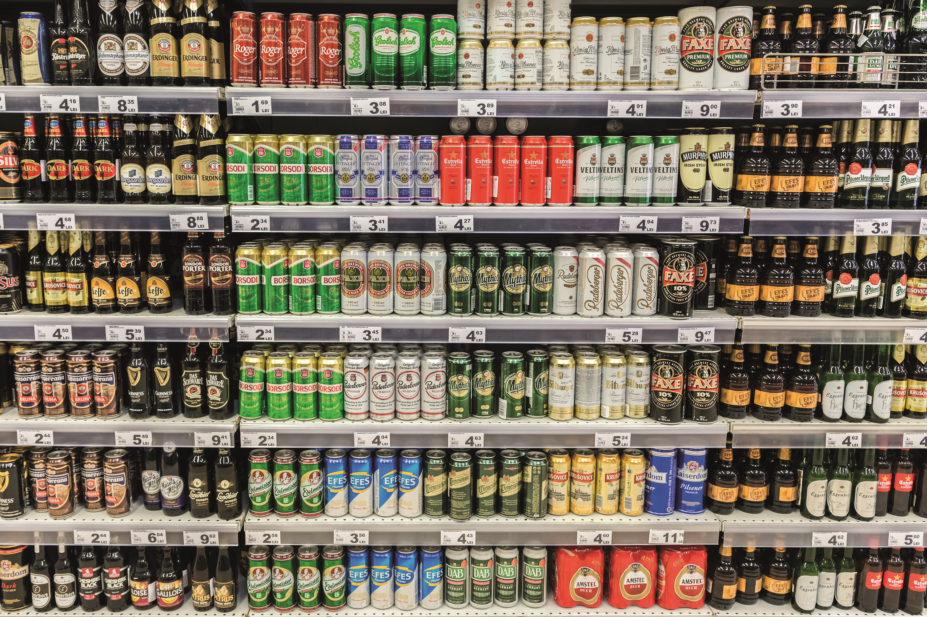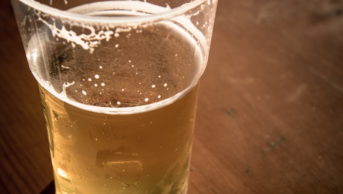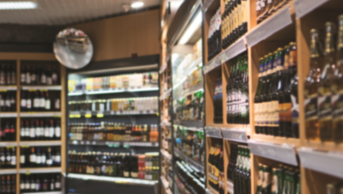
Shutterstock.com
During the 1970s to 1990s, the rate of alcohol-related death grew faster in Scotland than in England[1]
. However, some years passed before the Scottish Government Health and Social Care Directorates paid it full attention, and its action was perhaps triggered by a report submitted to its own Health Bulletin
[2]
. Consumption per adult grew higher in Scotland than in England, but, importantly, Scotland showed a greater prevalence of very heavy drinkers.
In the 1960s and 1970s, we saw people drinking non-beverage alcohol or substitutes, such as hair lacquer. It was around this time, however, that supermarkets and corner shops began selling alcoholic beverages, and even the poorest people in society could afford to purchase alcohol cheaply. The ‘real’ price of alcohol — the price per unit (8–10g ethanol) — relative to what was left in pockets at the end of the week, was falling.
In 2004, after seeing an intellectually disabled patient (well-known in the Courts for alcohol-related sex offences) emerged from a corner shop with three 3L bottles of a cheap high-strength cider, we submitted an application to the Scottish Chief Scientist to study purchasing patterns of patients seen in hospitals with alcohol-related diagnoses.
Discussing very cheap alcohol in parliament
In the same year, Tayside alcohol consultant Peter Rice produced a 3L bottle of cider to a cross-party group at Scottish Parliament and told members that a unit of alcohol could be purchased for as little as 14p. The government’s strategy against alcohol problems, he said, lacked evidence.
We began systematically documenting patients whose alcohol consumption had caused attendance or admission to Edinburgh hospitals. Around 92% of the alcohol consumed by these patients had been purchased from supermarkets and corner shops. The heaviest consumers purchased cheap vodka and cider for as little as 14p per unit — the same amount Rice had cited; as expected, those who buy a lot of something tend to find the best bargains[3]
.
Recorded sales of strong cider in Scotland could all be accounted for by people dependent on alcohol
In a study of another 667 ill drinkers in Glasgow and Edinburgh (juxtaposed with national data on patients admitted to Scottish acute hospitals with alcohol dependence that year), we calculated that recorded sales of strong cider in Scotland in the study year could all be accounted for by people dependent on alcohol[4]
.
In other populations, price increases have often led to reduced consumption, unless there is an active illicit alcohol industry, as in some developing countries. Tax increases can have this effect by increasing prices across the range, but they are not reliable: retailers can absorb tax increases without changing prices, and heavy drinkers tend to react by moving to cheaper products[5]
. Tax increase was not an option in Scotland because taxes are set by the UK Government in Westminster, not by the devolved Scottish Government. A policy to eliminate cheap alcohol (anything being sold at below 50p per unit, for example) looked ideal for Scotland.
Introducing a minumum price per unit
In 2009, the Scottish Government produced a new strategy that included the possibility of legislating a minimum retail price per unit, and by 2012 the proposal was put to the Scottish Parliament[6]
. This proposal was backed by a projection based on the patterns of drinking and purchasing in national surveys (a methodology applied to England), and a span of data from Saskatchewan and British Columbia, Canada, where increases in minimum prices set by the provincial alcohol monopoly were associated with decreases in consumption[7],[8]
,[9]
. The legislation was voted in, and the Alcohol (Minimum Pricing) (Scotland) Act 2012 was the result.
The Act was promptly challenged in the courts by the alcohol industry
The Act was promptly challenged in the Courts in Scotland and Europe by the alcohol production industry, but those involved in the on-trade (i.e. pubs, bars and restaurants) welcomed a step that would reduce the gap between their prices and the low prices in supermarkets, which, some said, was responsible for the threatened demise of the British pub.
The third blocking attempt by the industry was overturned on 15 November 2017 when the UK Supreme Court confirmed that legislation to allow minimum unit pricing is lawful and proportionate, given the harm to society related to alcohol.
Objections to the policy are several: it may stimulate illicit trade, including smuggling; drinkers addicted to alcohol could turn to other addictive substances; retailers could profit while revenue to the Treasury could fall; and the poorest members of society would bear the brunt of the price increase.
The impact of having a minumum unit price
The impact of a minimum unit price (MUP) for alcohol has been investigated in two ways. A group of researchers from the University of Sheffield estimated from previous survey data that, irrespective of income, moderate drinkers would be little affected by a MUP of 45p. The greatest effects would be seen in harmful drinkers. Harmful drinkers on low incomes purchase more alcohol at lower cost than the MUP threshold compared with other groups, and so are likely to be most affected by this policy. Large reductions in consumption in this group would, however, coincide with substantial health gains in terms of morbidity and mortality related to reduced alcohol consumption because those sections of society have the highest prevalence of harm[10]
.
In an actual population of 667 harmed drinkers we had surveyed in 2011–2012, we estimated that implementation of a 50p MUP would lead to more than two-thirds of drinkers, representing all socioeconomic and deprivation levels, having to reduce their expenditure on alcohol or find new sources of funds; the other third of the drinkers could still trade down (i.e. buy more cheaply because they had not already been buying at the cheapest level) and maintain their alcohol intake[11]
. We asked a sample to predict how they imagined they would respond if they could no longer purchase cheap alcohol. Sourcing illicit alcohol had rarely been admitted by our subjects, and they did not see this as a likely response. Although some thought they would reduce consumption (and wondered how they would cope with withdrawal symptoms), many said they would rather reduce other daily expenditure and perhaps suffer hardship[12]
.
The effects of the minimum unit price will be monitored over the next five years and if benefits cannot be shown the law could be withdrawn
The legislation contained a sunset clause: the effects of the MUP will be monitored over the next five years. If the predicted benefits to Scottish society cannot be demonstrated, the legislation could be withdrawn. It remains to be seen whether the governments of the Republic of Ireland, Wales and Northern Ireland, who have all recently recommended a MUP policy, will wait for Scottish data to be published, or proceed to legislation now that the legal controversy has resolved.
References
[1] Leon D & McCambridge J. Liver cirrhosis mortality rates in Britain from 1950 to 2002: an analysis of routine data. Lancet 2006;367:52–56. doi: 10.1016/S0140-6736(06)67924-5
[2] Chick J. Evidence suggesting increasing health damage in Scotland related to alcohol. Health Bulletin 1997;55:134–9
[3] Black H, Gill J & Chick J. The price of a drink: levels of consumption and price paid per unit of alcohol by Edinburgh’s ill drinkers with a comparison to wider alcohol sales in Scotland. Addiction 2011;106:729–736. doi: 10.1111/j.1360-0443.2010.03225.x
[4] Chick J, Gill J, Black H et al. Strong cider sold in Scotland appears to be almost exclusively for dependent drinkers. Clinical Medicine 2016;16:398. doi: 10.7861/clinmedicine.16-4-398
[5] Gruenewald PJ, Ponicki WR, Holder HD et al. Alcohol prices, beverage quality, and the demand for alcohol: quality substitutions and price elasticities. Alcohol Clin Exp Res 2006;30:96–105. doi: 10.1111/j.1530-0277.2006.00011.x
[6] Scottish Government. Changing Scotland’s relationship with alcohol: a framework for action. Available at: http://www.gov.scot/Publications/2009/03/04144703/7 (accessed January 2018)
[7] Purshouse RC, Meier PS, Brennan A et al. Estimated effect of alcohol pricing policies on health and health economic outcomes in England: an epidemiological model. Lancet 2010;375:1355–64. doi: 10.1016/S0140-6736(10)60058-x
[8] Stockwell T, Zhao J, Giesbrecht N et al. The raising of minimum alcohol prices in Saskatchewan, Canada: impacts on consumption and implications for public health. Am J Public Health 2012;102: e103–e110. doi: 10.2105/AJPH.2012.301094
[9] Zhao J, Stockwell T, Martin G et al. The relationship between minimum alcohol prices, outlet densities and alcohol-attributable deaths in British Columbia, 2002–09. Addiction 2013;108:1059–69. doi: 10.1111/add.12139
[10] Holmes J, Meng Y, Meier PS et al. Effects of minimum unit pricing for alcohol on different income and socioeconomic groups: a modelling study. Lancet 2014;383:1655–6. doi: 10.1016/S0140-6736(13)62417-4
[11] Gill J, Black H, Rush R et al. Heavy drinkers and the potential impact of minimum unit pricing — no single or simple effect? Alcohol and Alcoholism 2017;52:72–79. doi: 10.1093/alcalc/agx060
[12] O’May F, Gill J, Black H et al. Heavy drinkers’ perspectives on minimum unit pricing for alcohol in Scotland: a qualitative interview study. SAGE Open 2016;6(3):1–10. doi: 10.1177/2158244016657141


